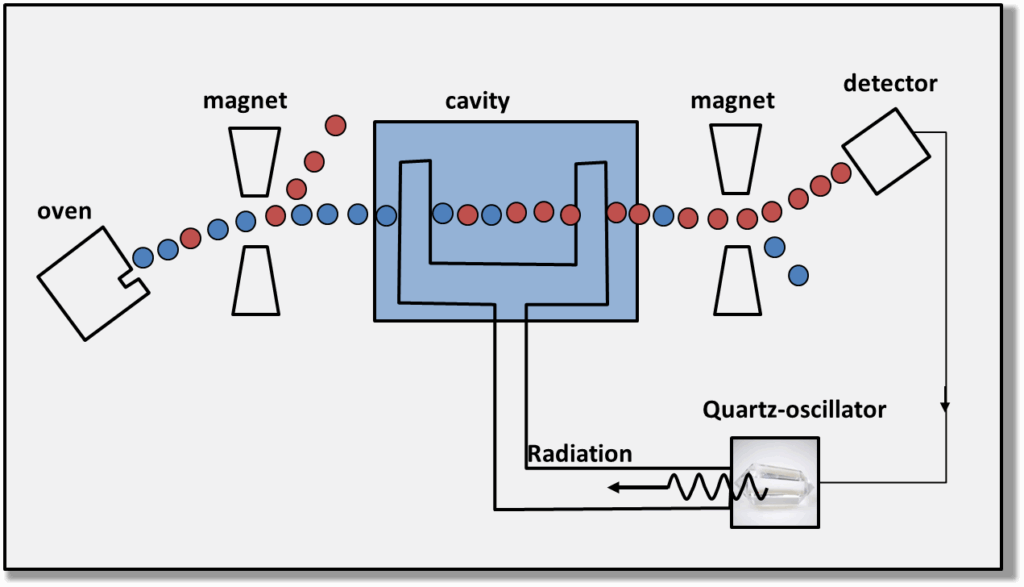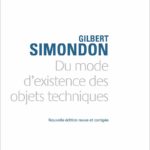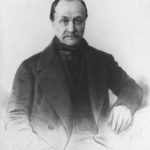
A tecnicidade do tempo (Mackenzie 2001)
MACKENZIE, Adrian. 2001. The technicity of time: from 1.00 oscillations/sec to 9,192,631,770 Hz. Time & Society 10(2/3):235-57.
MEDIAÇÕES TÉCNICAS COMO VÍNCULOS NÃO HUMANOS ENTRE HUMANOS
The pendulum clock and the atomic clock are technical objects. More specifically, they embody technical mediations concerning the temporal and spatial sequencing of events. They stand between other entities, living and non-living, which together constitute a collective. Technical mediations topologically knot social relations within human groups to non-living processes. (Mackenzie 2001:236)
TECNICIDADE COMO VIRTUALIDADE (negociando os limites do coletivo)
In preliminary terms, ‘technicity’ refers to a specific virtuality or eventfulness associated with technical mediations. (Mackenzie 2001:236-7)
the technicity of clocktime as an event or inherently unstable genesis occurring at the limits of human–nonhuman collectives. As an evolutive or unfolding power, technicity structures particular technical objects, ensembles (such as the pendulum or atomic clock) and living bodies as provisional solutions to the problem of how an ensemble of living and non-living processes articulates its own temporal and topological limits. Technicity precedes and surpasses particular technological objects or social functions. (Mackenzie 2001:237)
To speak of the technicity of clocktime implies an evolutive, genetic process subject to objectivation (for instance in different clocks) and ‘subjectification’ (for instance, in various embodiments of clocktime), yet remaining irreducible to particular technical treatments.
A TECNICIDADE DO TEMPO-DE-RELÓGIO
Conversely, to focus on the technicity of clocktime is to suggest that the social ordering of time, the scientific manipulation of time as a fundamental dimension of physical systems, and the individual experience of time as imbricated in memory and anticipation, all concretize through metastable processes associated with clocktime as an event. (Mackenzie 2001:237)
the technicity of clocktime as an ongoing differentiation or genesis occurring at the limits of sociotechnical collectives. (Mackenzie 2001:237)
A GLOBALIZAÇÃO, DO PÊNDULO AO ÁTOMO DE CÉSIO 133 (centro de cálculo)
A symbolic connection runs between the two clocks. On the one hand, the pendulum clock offers an elementary symbol of incipient technological globalization, while on the other, the atomic clock symbolizes globalization completed, since its exactitude now reveals unpredictable variations in the revolutions of the earth itself. (Mackenzie 2001:238)
The pendulum clock links the private chambers of the king to the peripheries of empire and colonies. It secures the possibility of moving between the centre and periphery, by capturing invariant oscillations to mark the time and providing a technical realization of a universal, coordinated time and length. The pendulum clock modulates the incipient movement of globalization by establishing the possibility of a globally valid measurement system. (Mackenzie 2001:238)
The atomic clock by contrast affords an image of the completion of globalization, at least in relation to navigation, in the guise of the GPS, which relies on many atomic clocks located in orbiting satellites and in a network of ground stations. (Mackenzie 2001:238)
The oscillations stretch between the pendulum clock and GPS: the speeding up between 1.0 and 9,192,631,770 oscillations/second requires that one oscillator be tuned to another oscillator of known period in order to synchronize the oscillations, to allow them to resonate with each other. Perhaps one important aspect of what we experience as globalization today is the cumulative effect of the synchronization of dispersed oscillations. (Mackenzie 2001:246)
A NATUREZA SOCIOCÊNTRICA DO TEMPO
The ‘sociocentric’ nature of time consists in the use of repetitive, usually inorganic sequences (ranging from the movement of a shadow during the course of the day to the hands or digits of a clock) for the symbolic representation of non-repeatable social sequences. The very existence of time, on this account, is a social artefact of the numbering or ordering of sequences in synchronized relation to each other, and this in turn relies on phenomena that display numerable repetition. Timing technologies supply sequences of marks through which social groups code sequences of events. (Mackenzie 2001:240)
Time appears to have an existence independent of social customs, but in reality it is grounded on the social acts of timing or dating by which phenomena are semiotically related. (Mackenzie 2001:240)
TEORIA ATOR-REDE
If we follow Latour, bringing this general approach down to a specific case such as clocktime entails apprehending clocktime as a technical mediation which does not measure or administer a pre-given time or space, but which constitutes a regime of timings and spacings (Mackenzie 2001:241)
A ESPECIFICIDADE DO TEMPO-DE-RELÓGIO (isocronia e isotopia)
To be sure, clocks are not alone in defining time. Every technical mediation, insofar as it folds, deforms and shifts relations between living and non-living elements of a sociotechnical ensemble, ‘eventalizes’ times and spaces. The ‘time’ of a medieval castle and the ‘time’ of a high speed train are not the same because of the different topological and temporal folds they weave into collectives. The specificity of clocks and clocktime consists only in their special status as a guarantee of a certain regime of isochrony and isotopy. Subsequent bifurcations into objective and subjective times only gain traction through the incremental synchronization of more and more clocks. (Mackenzie 2001:241)
UNIVERSALIDADE DO TEMPO-DE-RELÓGIO (enquadramento particular)
there is no space and time apart from the technical mediations through which selected events – oscillations and inscriptions in the case of clocktime – are linked. (Mackenzie 2001:241-2)
The crucial point for our purposes would be that the interval between 1.0 oscillation/second and 9 billion oscillations/second stems from the way that infrastructural technologies such as railways are constantly ‘conjuring nature’ into a particular representational framework in which time and space are universal and neutral (Mackenzie 2001:242)
AUTONOMIA DO TEMPO-DE-RELÓGIO (redução da margem de indeterminação da interação entre o pêndulo-mundo e o mecanismo contador-mostrador por meio da isocronia, i.e., a delimitação de um intervalo de tempo por meio do movimento de um corpo-terra-pêndulo no espaço)
time can appear to be or become autonomous through clocks (Mackenzie 2001:243)
With the pendulum clock, ‘the work of the clockmakers will largely consist of disconnecting, as much as possible, the pendulum-regulator from the rest of the mechanism’ (p. 186). The decoupling of the pendulum from the rest of the clockwork takes various forms – recoil escapement, deadbeat escapement, free escapement, constant force escapement – yet all these forms head in the direction of presenting the isochronic oscillations of the pendulum as an embodiment of ‘the time’. The remainder of the mechanism becomes a means of either displaying information about the time or correcting for the fact that the pendulum itself is never ideal, that it always suffers from friction, and that, more importantly, as Huygens points out, the period of a simple pendulum varies according to the driving force of the clock-work. If the pendulum can be isolated from these variations, then time itself can appear to be separate from its technical realization. Through isochronic oscillation, the pendulum can exist as the autonomous embodiment of natural or physical time. (Mackenzie 2001:244)
The constitution of the second as a unit of time coupled to the earth’s revolutions allows it to claim independence from all terrestrial locality. It is now identified with the earth’s diurnal revolution rather than the alternation of day and night, or the apparent movement of the stars, which vary seasonally and from place to place. (Mackenzie 2001:245)
The cost of normalized time is a strengthened relation between the pendulum’s and the earth’s movements. (Mackenzie 2001:245)
the emergence of autonomous clocktime, or the ‘physical time’ which Elias described as ‘branching off’ from social time, requires a specific and localized de-coupling of pendulum and clockwork together with a specific yet generalized coupling of the pendulum with an associated milieu, the revolutions of the earth. Through its suspension, and the resulting mechanical isochronism of its oscillations, clocktime can appear as the embodiment of autonomous time. Through synchronization of oscillating pendulums, the pendulum’s oscillations geographically distribute clocktime, and indeed serve as a way of establishing spatial relations between distant places. (Mackenzie 2001:246)
MANTER A ISOCRONIA ATRAVÉS DAS VARIAÇÕES AMBIENTAIS EXIGE METAESTABILIDADE
Later technical developments of the pendulum clock, especially during the 18th and 19th centuries, concentrate on refining the isochronism of the pendulum over a wider range of milieus, taking into account variations in air pressure and temperature. When the oscillator becomes piezo-electric, as in the case of the quartz crystal oscillator, or atomic as in the GPS, this is partly an attempt to maintain isochronism over an ever wider range of milieus. The technical problem remains constant throughout: how can the isochronic constraint necessary for autonomous time be maintained over a wider range of milieus? From the perspective of the technical history of clocks, it can only be maintained if the clock can stabilize new sources of variation. From the perspective of technicity, and for an understanding of the divergence symbolized by the interval between 1.0 and 9,192,631,770 oscillations per second, metastability rather than stability is crucial. Metastability refers to the provisional equilibrium established when a system rich in potential differences resolves inherent incompatibilities by restructuring itself topologically and temporally (Mackenzie 2001:247)
PÊNDULO COMO DIODO
As Stengers and Gille suggest, the technical development of the pendulum and escapement tends to minimize the energy converted in this process, and to constrain it as a one-way process in which information flows from the pendulum-regulator to the clock face, but not in reverse. From the technical perspective, contact between the pendulum and the clockwork represents a deviation away from the ideal of the autonomous pendulum. Perfect suspension as an ideal seeks to disguise the technical constitution of clocktime. (Mackenzie 2001:248)
MEDIAÇÃO TÉCNICA DO RELÓGIO COMO LOCALIZAÇÃO DA INDETERMINAÇÃO-METAESTABILIDADE EM PONTOS-CHAVE DE UM MOVIMENTO OSCILATÓRIO DE UM CORPO NO ESPAÇO
the intermittent moments of contact constitute the metastability of the system. In effect, these moments constitute clocktime. (Mackenzie 2001:248)
This contact between the rod and the pendulum localizes indetermination in a very specific way. The pendulum, whose associated energetic milieu is the earth’s gravitational field, informs the cogwheel gear-train of the clockwork by touching the rod. Despite worn or sticking cogs, the pendulum ‘informs’ the rod of the period of its oscillations. […] During ‘the short time’, the pendulum enters into a complicated and highly mediated exchange with the potential energy stored in the weights that drive the clock. The gravity-driven clockwork transfers some of its stored energy to the pendulum, and reciprocally, the pendulum’s oscillations inflect the rhythm of the clockwork’s movement. The ‘sensible instants, rich in possibilities’ that Simondon refers to occur during the wavering, inconstant contact between rod and pendulum. Out of the super-saturated, undifferentiated potentials of those instants, two divergent realities unfold, one facing towards a geographical-terrestrial milieu (the earth’s gravitational field), the other facing towards a social milieu of symbols, numbers and counting conveyed as ‘the time’. (Mackenzie 2001:249)
clocks topologically localize metastability at certain points of repeated contact. The resolution of metastability is much more provisional in the case of the clock than in the case of the crystal. The clock suspends any final resolution of its metastability by localizing indetermination at key points. In suspending resolution, it repeats it. The very stability of time as a recurring sequence rests on that localized metastability. Clocks are not alone in this. Machines and technical ensembles in general effect localized suspension of indetermination. (Mackenzie 2001:249)
MODULAÇÃO MÚTUA FORMA-PÊNDULO/MATÉRIA-ENERGIA
The temporal form of the clockwork is molded by the oscillations of the pendulum. The temporal ‘matter’ of the pendulum requires the energy stored in the weight-driven clockwork. The clock in a sense has no fixed form or matter, since both the oscillations of the pendulum and the cyclical motions of clockwork are reciprocally interacting and adjusting each other. The pendulum modulates the clockwork, and the clockwork modulates the pendulum. (Mackenzie 2001:250)
DA TERRA PARA CAMPOS ELETROMAGNÉTICOS
The almost sensible instants in which pendulum and escapement reciprocally modulate each other are replaced by imperceptibly rapid contacts between the oscillating fields of microwave radiation and electric potential fields of certain electrons belonging to caesium atoms. Although the reciprocity of modulations essential to clocktime remains operative, the localization of indetermination in the atomic clock-machine has now been displaced from oscillations coupled to the earth’s gravitational field and redeployed in the less palpable yet still localized interactions of oscillating electromagnetic fields. (Mackenzie 2001:250)
ACELERAÇÃO DO TEMPO E DESCOMPASSO ESPAÇO-TEMPORAL
what counts as time and place depends heavily on the kinds of technicity through which a given collective structures itself temporally and topologically. The ‘trigger’ for the multiplication of clocktime oscillations is neither extrinsic or intrinsic to society. Rather it resides in the recurrent play occasioned by non-coincidence between a collective’s topological and temporal limits. (Mackenzie 2001:251)
GPS – O COLETIVO EM CONTATO COM MAIS ASPECTOS DE SEU MEIO (pela redução da margem de indeterminação = aumento no número de vezes em que variações do meio podem ser captadas e consideradas pelo coletivo)
The GPS constellation, orbiting the planet roughly every 11 hr 58 min on slightly elliptical orbits […] [;] [i]ts orbits and the propagation of its timing signals are perturbed by non-ideal and difficult to calculate factors such as the sun and moon’s gravitational fields inducing tidal changes in the earth’s gravitation field, solar winds impinging on the satellite, orbital deviations caused by the slow release of atmospheric gases from satellites made on earth, variations in ionospheric and tropospheric conditions, multipath distortion of signals, and above all, Selective Availability (the deliberate manipulation of the satellite clocks and navigational data by the US Department of Defense to ensure that the highest levels of signal accuracy are only available to authorised users). (Mackenzie 2001:251-2)
The simplest account of the complex structure of the GPS signal would be to say that GPS takes the variations of its milieu into account. It would be possible to trace how the multi-layered modulation of the primary oscillations links geographical, meteorological, cosmological, military, economic and legal domains. The intersection of these domains with each other through various forms of feedback and reciprocal modulation in GPS constitutes another provisional structuring of the metastable technicity of clocktime. When compared to the pendulum clock, the increase in the rate of primary oscillations does not derive from a de-localizing or homogenizing dynamism intrinsic to modern technology. Rather, it stems from the articulation of different points of contact between human and nonhuman collectives and their associated milieus. ‘Technicity,’ Simondon writes, ‘super-saturates itself by incorporating anew the reality of the world to which it applies’ (Simondon, 1958/1989a: 158). Out of this super-saturated state, particular structures precipitate. The rate of oscillation of contemporary clocktime indicates the absorption of a field of contingencies that were previously outside the limits of the collective, or that were previously subject to different kinds of treatment (for instance, social, political or cultural representation). (Mackenzie 2001:252)
Super-saturated by that incorporation, the technicity of clocktime restructures the limits of the collectives it belongs to. It initiates points of contact between collectives and what lies outside them, and in doing so, establishes new limits, new pathways of action and affect within the collectives to which it belongs. The multiplying modulation of clocktime which underlies something like GPS (or the computer clocks whose oscillations are a fundamental component of contemporary digital technologies) moves the critical phases which in the pendulum clock mediated between the pendulum’s movements and the clock’s hands into a more complicated ensemble of mediations. The quantitative multiplication accompanies a topological complication in the structures of the collectives. (Mackenzie 2001:252)
NEGOCIANDO DESCOMPASSOS
I have argued that the ongoing genesis of clocktime can be read as the provisional resolutions of metastability in a collective whose limits are not given in advance. Clocktime technicity, in the terms used here, refers to the way in which collectives absorb contingency within certain sequences of order and synchronization. The absorption remains incomplete because timing and spacing include undifferentiated potentials whose ongoing individuation accounts for the interval between 1.0 and 9,192,631,770 oscillations/second. The major point of divergence from the evaluations of clocktime offered by Heidegger, Virilio, Elias and Latour rests on the notion that a collective cannot completely define its own limits because it is not completely in phase with itself. A kind of structural incompleteness or virtuality remains. (Mackenzie 2001:253)
INCOMPLETUDE ESTRUTURAL (DESCOMPASSO) MOVE A TECNICIDADE DO TEMPO-DE-RELÓGIO
Technical mediations are not simply semiotic, and they only figure obliquely in the processes whereby cultures or societies represent their own ongoing collective life to themselves. (‘Technology’, by contrast, figures hugely as an object of contemporary discourse.) Clearly, clocks as a technical mediation have a history. But it is through history, not technicity, that a society represents itself to itself. Clocktime technicity refers to something different. While still integral to the life of a collective, it is concerned with the ways in which certain collectives structure their belonging-together as an ensemble of living and non-living processes within temporal and topological limits that cannot in advance be fully lived or represented. Different timing regimes – the pendulum clock, the atomic clock – represent different configurations of those limits, and different ways of articulating divergent realities, living and non-living, with each other. (Mackenzie 2001:253)
Clocktime neither stands apart from collectives nor is it completely coded with-in their social functions or purposes. Its mutability stems from the structural incompleteness of collectives themselves. (Mackenzie 2001:253-4)
RELÓGIO NO COLETIVO
Clocktime permeates temporality. It inflects the anticipation of a future and the appropriation of a past. Through the localization of specific kinds of indeterminacy, the ongoing modulation of matter and form, and the incorporation of divergent realities in timing ensembles, the technicity of clocktime figures as one way in which collectives provisionally stabilize their points of contact with what exceeds them and also open themselves to ongoing differentiation. (Mackenzie 2001:254)
reading the face of a contemporary clock is less important than the clock’s role in directly regulating and synchronizing events. (Mackenzie 2001:256 nota 17)





 O LaSPA é sediado no Instituto de Filosofia e Ciências Humanas (
O LaSPA é sediado no Instituto de Filosofia e Ciências Humanas (